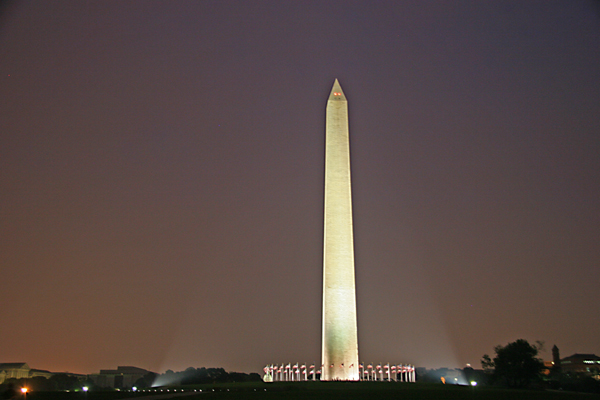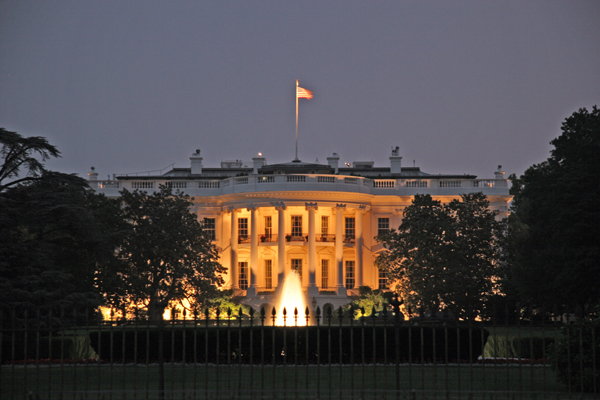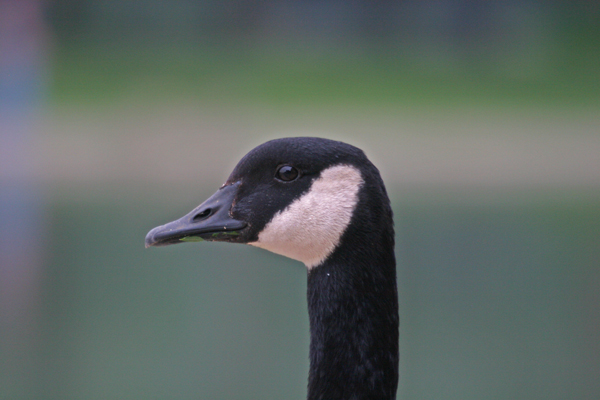
Today started out early as a research day with a trip to a couple of places in an effort to start piecing together some family history. The trip over to the National Archives in College Park Maryland was an effort to look through some of the Office of Strategic Services (OSS) files they have there compiled with records released from the Central Intelligence Agency (CIA) and the State Department.
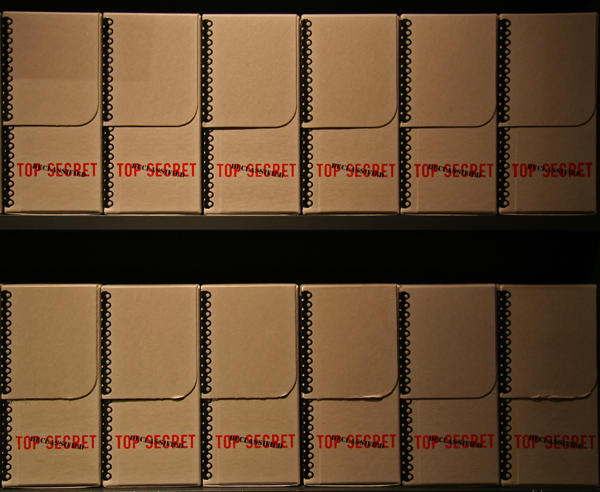
For some background, the historical precursor of the CIA was a group called the OSS that was established in 1942 and dissolved in 1945 only to be reorganized as the Central Intelligence Group in 1946. The role of the OSS was unusual in the course of history and their roles and duties were for the time equally unique. Prior to this time, most of the intelligence operations were fragmented and conducted by the various military branches who sometimes refused to cooperate with each other. After the formation of the OSS, intelligence was collected and analyzed for policy makers and special operations not conducted by other agencies were the prime missions.

OSS projects and missions varied from inciting and supporting partisan resistance in France, Italy and other countries in Asia to resist Axis countries, recovering prominent scientists and politicians from Axis occupied countries, recovering downed pilots behind enemy lines, spreading disinformation among enemy forces and populations and performing a variety of intelligence gathering missions including the recovery of enemy weapon systems.
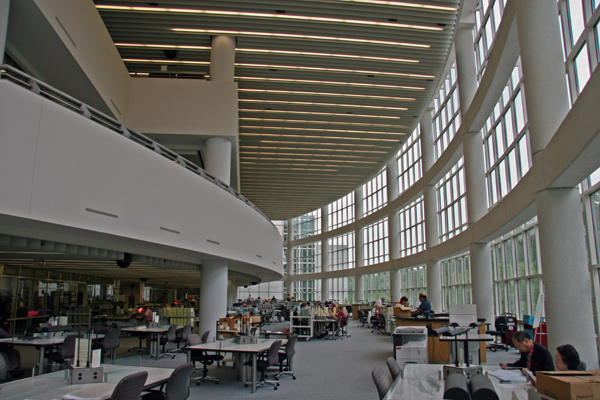
In order to perform the research required, you need to know what you are looking for which is a bit of a chicken and egg problem. Some files may still be classified and in that case, you must obtain appropriate clearances and demonstrate why you need access. Other files that have been declassified are easier to gain access to, but you still need to have some a priori information which is one of the problems inherent in historical research. Names, dates, timelines, associations, personalities, and all the meta-data that one can accumulate can be critical to establishing history.
At any rate, access can be easy or difficult depending upon the type of information one is looking for. For my research, in some areas I could not bring in any bags, but could with permission and after appropriate documentation of serial numbers and specific identification, bring in a laptop and camera. For other areas, you are only allowed a piece of paper and pencil. In these areas, no cameras, cell phones, laptops or electronic devices of any kind are permitted and you submit your requests by writing on the provided paper in pencil the names and locations of the documents you are looking for. Some materials are stored on microfiche, others are stored on paper, film, or prints and they are brought out to you.
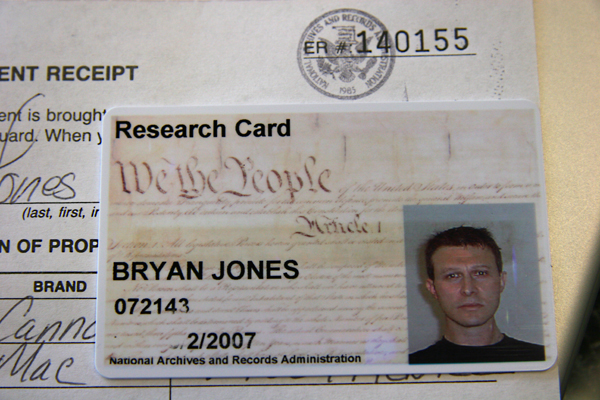
John Taylor who has studied and helped maintain these records for over 50 years, was very helpful in identifying the specific records and places to start looking, saving me tremendous amounts of time. The amazing thing about history is how much is unknown and formally undocumented. Places like the National Archives and Library of Congress are almost unparalleled in the history of the world in their efforts to archive historical documents. The problem of course is that many of these documents are not really organized or even indexed with respect to their contents or relationships. So, to extract the information out of them, one needs to pour through them and document all of the material in them. It’s a difficult thing to do and takes incredible amounts of time just to start putting together timelines, relationships and history from such disparate collections of documents. Preparation certainly helps and if one can go in with enough organized material ahead of time, it will certainly help. I have had to go to a couple of libraries in an effort to start piecing material together and I expect that I will be coming back to perform more work in the not too distant future. Were I independently wealthy and did not have to work for a living, I could easily see completing another Ph.D. in history just researching this history and writing it up.
After a long day at the College Park location, I headed back down to central D.C. to perform a bit more work, submitting to yet more checks, more searches and making more notes on paper than I have done in years. Boy was I missing being able to take notes with a laptop.
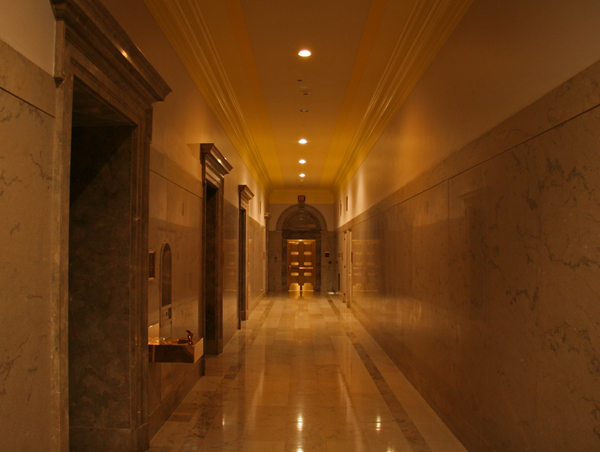
Needless to say it was a seriously long day and I had been going with only some coffee on board early this morning, so I figured that I could indulge myself for dinner. Since I was already down by the FBI building, I decided to check out Bistro D’Oc, a place for Languedoc cuisine from the South of France. I was seated at a small table in the back of the restaurant and ordered a Hoegaarden beer which immediately started to go to my head. So, being absolutely starved I ordered the fricassee de champignons Catalane (sauteed mushrooms with calamari, chorizo, crawfish, garlic confit and olives). I thought for the most part, this dish was good, the seafood was perfectly cooked, but it was simply too heavy on the garlic. For the main, I ordered the special steak on the menu, medium rare… which arrived a bit too tough and more medium well done than rare. I should have ordered the standard hanging tenderloin though given that it *was* a French bistro and it’s hard to screw up a staple dish. Desert was the special of the day, a cherry affair that while very, very tasty had a few too many textures with the crisp in the bottom. I must say though that the service was quite good and timely, giving me enough time to walk down the mall to one of my favorite places in D.C., the Lincoln Memorial.
I walked down the reflecting pool through the most amazing collection of ducks and geese and clouds filled with hoards of insects. I had a few minutes of daylight left to grab some shots of some of the birds including some of the beautiful Canada geese (Branta canadensis).
I arrived at the Lincoln Memorial just in time to see the lights turned on. It is a beautiful place designed and built to emulate a Greek temple with Abraham Lincoln at its center rendered in marble by Daniel Chester French. As you enter into the Memorial, you see on the South wall, the Gettysburg Address while on the North wall is inscribed Lincoln’s second inaugural speech. Abraham Lincoln is one of those people that you wish for a couple of hours over dinner with to just talk with and get some measure of this individual on a personal level.
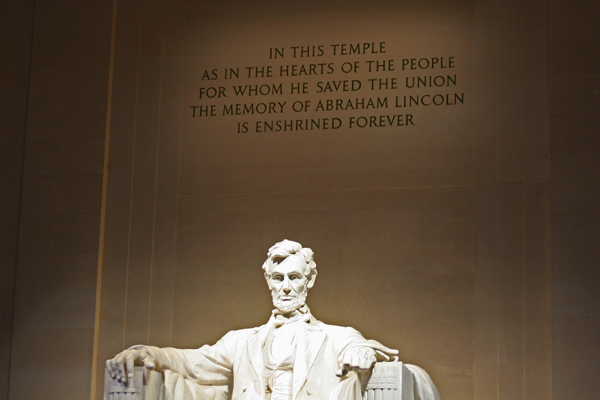
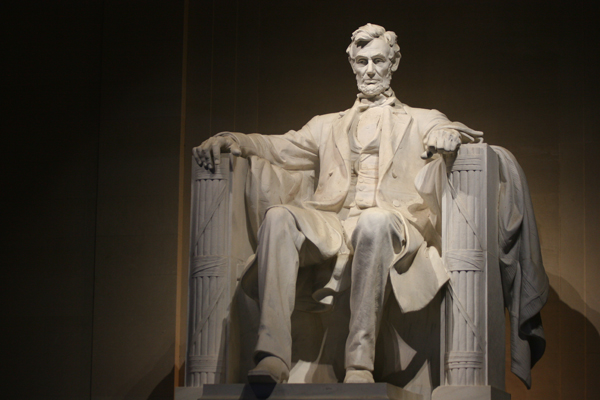
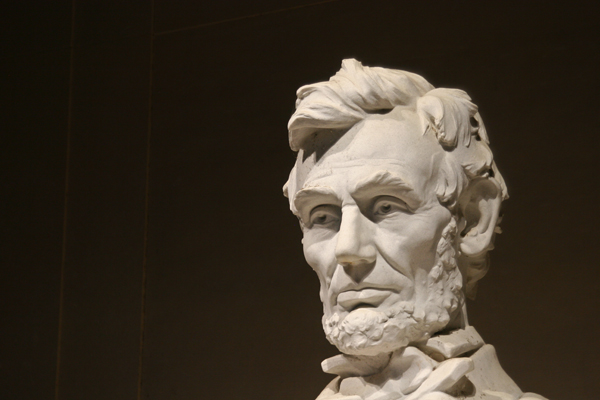
It was getting late, but I simply had to make a stop by the Vietnam Veterans Memorial as well. The first time I was here was about 15 years ago and it was a surprisingly emotional experience. The wall itself was designed by a then 21 year old Maya Ying Lin and is an amazingly simple, beautiful and powerful statement and honor for those that served and died in the Vietnam War. However, back then as now, the most emotional part of the experience is watching the people as they interact with the wall, touch the names and remember those who were lost. 15 years ago, I watched as a crying woman was touching the wall. She bent down, left something at the base of the wall and crying, walked along the wall trailing her fingers along the names as if not wanting to remove her fingers from whatever memory she was in the midst of. I walked over to where she left the object and I was stunned to find a pair of wedding rings, intertwined and bound with string. It was one of the most difficult things I’ve ever witnessed, leaving me completely speechless from a tight throat. That trip 15 years ago was with my family and ten minutes after watching the woman leave the rings, I watched my father walk up to the wall to see the names of his high school friends that had been killed in Vietnam. He touched the names and then simply walked away, completely unable to maintain any proximity to the wall. I never really saw him cry growing up and while he was not crying there at the Wall, he was obviously affected by the experience and was the first time in my life that I had seen such an emotional response from him. Even today, 15 years later, I watched as people left letters, pictures and captured rubbings of the names. The experience was just as emotional this time as it was back then and just as raw.
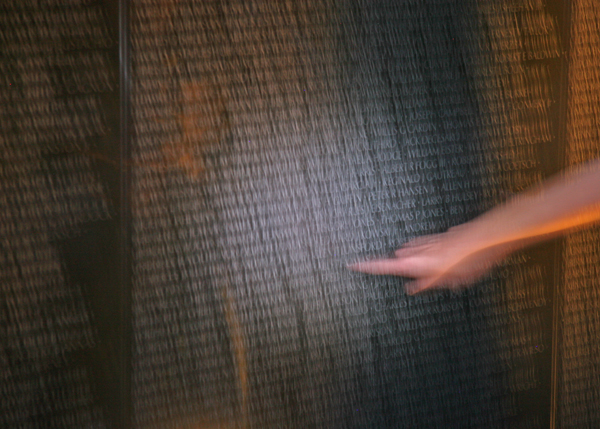
Walking back from the Wall, there is a statue of three soldiers looking towards the Memorial, almost appearing to look in wonder and respect at the engraved names and the people who come to see, touch and remember. Looking at their faces and the close proximity of the soldiers to each other emotes that brotherhood that emerges from shared experience in combat and almost puts me over the edge. The whole place has an emotional rawness to it carved out of a historical shared experience.
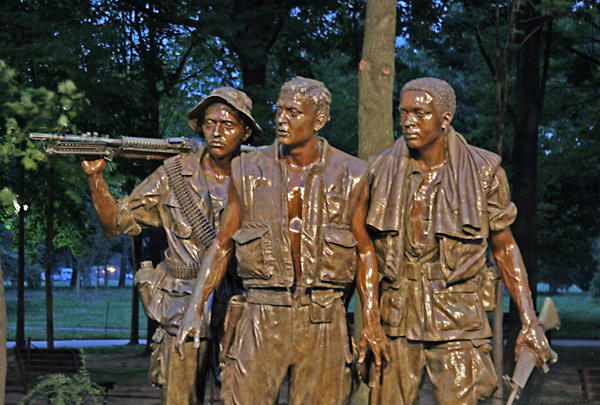
Finally, on my way back to the subway station, I made a stop by the Washington Memorial to get a few dramatic shots as well as some nighttime shots of the White House. There was a fantastic lightning show going on, but despite my best efforts, I could not get a shot of either the Washington Monument or the White House with lightning in them. I did however, manage to pass Karl Rove leaving the White House, carrying an arm full of paper and folders going somewhere… I was surprised that he would not be getting in a car parked inside the security gates of the White House.
